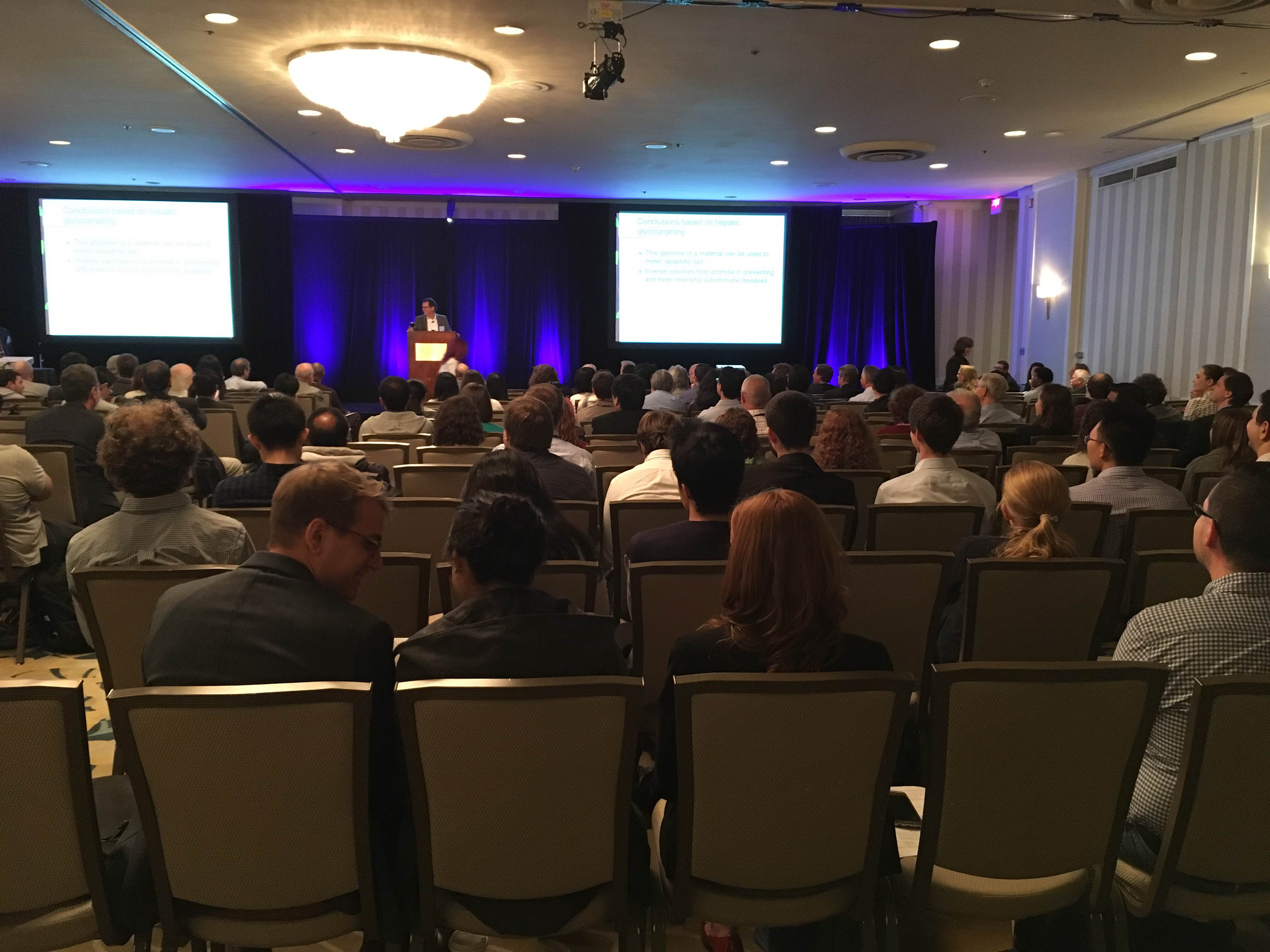
The Northwestern International Institute for Nanotechnology hosted the thirteenth annual IIN Symposium at the nearby Hilton Orrington in Evanston on Thursday. The event was not only meant to showcase the advancements in nanotechnology from various fields ranging from medicine to environmental science, but also to allow people to network and meet others within the field. Top of minds of participants, too, was Northwestern professor Sir Frasser Stoddart’s revolutionary work in the university's nanotechnology department, which had earned him the Nobel Prize the day before.
This year, the title of the symposium was “Manipulating Light, Electrons and Life Through Nanotechnology.” About 850 people attended the event: undergraduates, graduate students, professors and visitors, according to Kathleen Cook, Chief of Staff of INN.
Some, including Caroline Kraska, a senior from Carroll University in Wisconsin, drove all the way to Evanston to learn more about the nanotechnology projects discussed.
“Our professor decided that this [symposium] would be a good idea to get more of an introduction in the field and see what other people are doing,” said Kraska. “This isn't really a common field we can study at our small university."
Participants also recognized the work that Northwestern has done recently in the nanotechnology field. The IIN has had prominent work done in recent years, as it has raised over $700 million in venture capital funding due to its research, according to the organization’s website.
“It's really a celebration of the prominence that Northwestern plays in nanotechnology,” said Chad Mirkin, the director of IIN. “We have now, through IIN, one of the largest nanotech operations in the world. This is our way of showcasing not only the luminaries from other institutions from around the world, but also to showcase to the community here."
The event formally began bright and early at 9 a.m. and concluded at 5:30 p.m. The symposium kicked off with opening remarks from Mirkin. Following the opening remarks were two sessions of speakers. During the first session of speakers, most of the speakers focused on nanotechnology in the field of material and electrical sciences. The speakers during the second session focused on nanotechnology related to health and medicine. Following each speaker was a 10-minute Q&A session. The day-long symposium concluded with a reception.

This event was meant to showcase Northwestern’s prominent nanotechnology department, one that recently received a Nobel Prize just yesterday due to Sir Frasser Stoddart’s revolutionary work with molecular machines.
“A lot of talks were general but it gave a good overview of nanotechnology and what sort of potential it has for the future–for energy and solar cells and more,” said Mark Karver, PhD and director of Peptide Synthesis Core Facility.
While the discussions about the future of nanotechnology was important, many found that simply meeting other like-minded people was important as well.
“One of the best parts of this symposium is just getting all the minds together and getting everyone to talk to each other in informal settings,” said Karver. “You get to see some of the research and you get to talk to people – it kind of breeds collaboration."
Although some researchers knew a lot about one certain topic, many felt they had learned something new during the event.
"[The symposium] brings together a community of those interested in nanotechnology in all areas of application,” said Jeffrey Hubbell, one of the speakers.
While Hubbell felt he already knew a lot about health related applications of nanotechnology, he felt he had learned a lot about how the field of energy science incorporates nanotechnology.
Mirkin believes that this symposium is especially important because of the role nanotechnology may play in the future.
"The neat thing about nanotechnology is that it's a field that's going to change everything as we know it,” said Mirkin. “It's really about making new structures and materials, and those derive every application there is out there–electronics and commuting, drug delivery and medicine, materials that can impact the environment and change how we store CO2 – advances in nanotechnology are playing a significant role."
In addition to the speakers, Stoddart was recognized during the symposium for being awarded the Nobel Prize in Chemistry for the design and synthesis of molecular machines. Stoddart, who attended the reception that followed the symposium, stated that symposiums like these are important in the scientific community.
"They bring together the top-end of the scale of the best and the brightest to share the accomplishments of their careers, from literally around the world," Stoddart said. "Meetings are very important; you learn much more at a meeting than you do just reading a scientific paper."
Below is the full list of speakers from the event, followed by the topic they spoke on.
Sir John Pendry, FRS (Fellow of the Royal Society), FInstP (Fellow of the Institute of Physics (UK)), (Professor of Theoretical Solid State Physics at the Imperial College of Science and Technology, London, England) “Metamaterials Open New Horizons in Electromagnetism”
Stuart Parkin (Alexander von Humboldt Professor at the Marin Luther University Halle-Wittenberg, Germany) “Spintronic and Ionitronic Technologies”
Harry Atwater (Howard Hughes Professor and Professor of Applied Physics and Materials Science at the California Institute of Technology) “Fueling Human Progress with Sunlight”
Buddy Ratner (Joint Professor of Bioengineering and Chemical Engineering; Michael L. & Myrna Darland Endowed Chair in Technology; Commercialization; Director of University of Washington Biomaterials at the University of Washington) “Interfacial Proteins: Pioneer Nano-Constructs and Their Implications for 2016”
Kristi Anseth (Distinguished Professor and Tisone Professor, Chemical & Biological Engineering; Howard Hughes Medical Institute Investigator at the University of Colorado at Boulder) “Engineering Biomaterials Across Scales and Their Application in Regenerative Medicine”
Jeffrey Hubbell (Barr L. MacLean Professor of Molecular Engineering Innovation and Enterprise; Deputy Director for Faculty an Staff Affairs, Institute for Molecular Engineering at the University of Chicago) “Materials and Protein Engineering for Modulating Immunity and Tolerance”